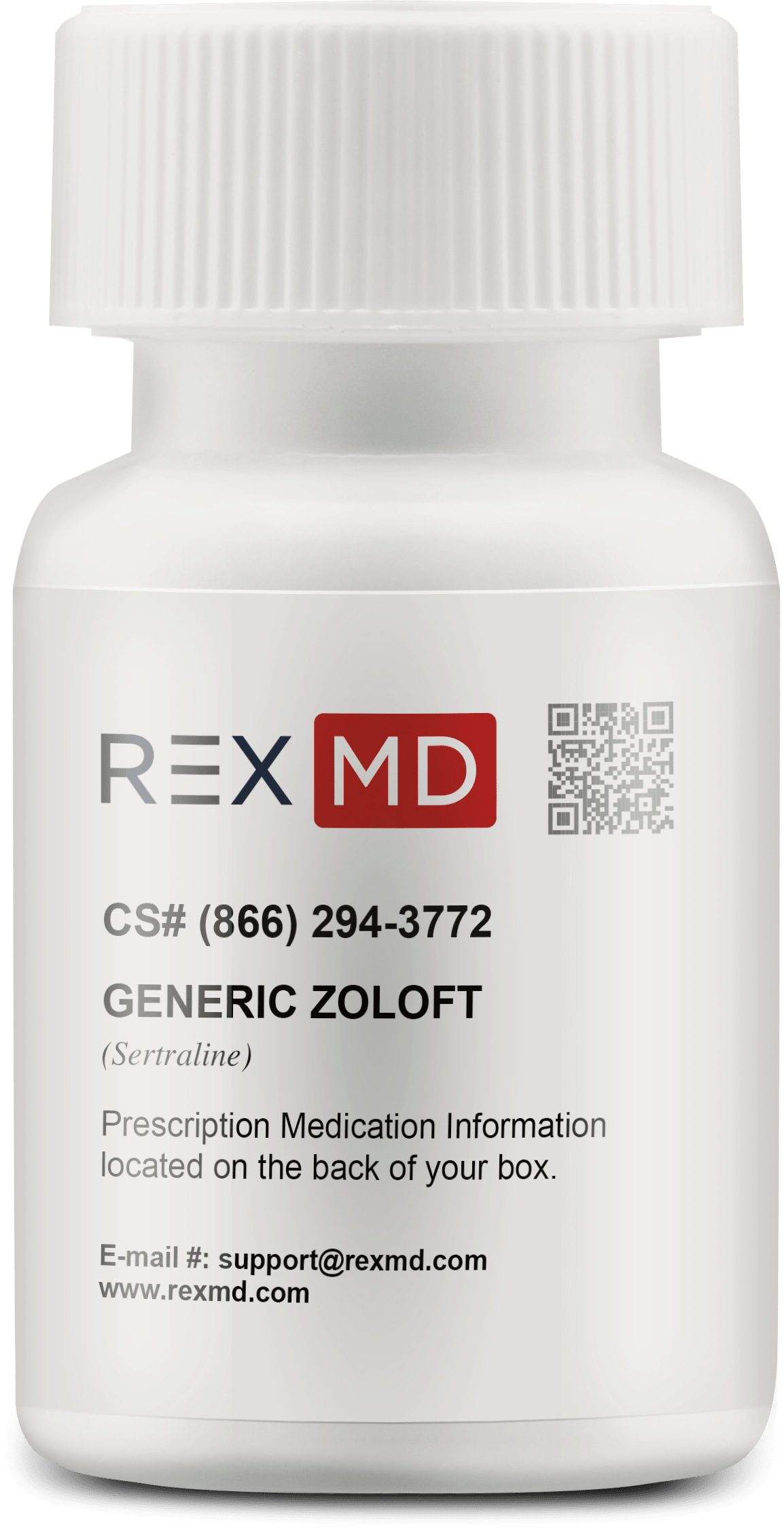What Should You Know Before Taking Sertraline
Disclaimer: Sertraline and other antidepressant medicines may cause serious side
effects. Call your healthcare provider right away if you have any of the following symptoms, or
call 911 if there is an emergency.
Suicidal thoughts or actions:
- Sertraline and other antidepressant medicines may increase suicidal thoughts or
actions in some people 24 years of age and younger, especially within the first few
months of treatment or when the dose is changed.
- Depression or other serious mental illnesses are the most important causes of suicidal
thoughts or actions.
-
Watch for these changes and call your healthcare provider right away if you notice new
or sudden changes in mood, behavior, actions, thoughts, or feelings, especially if
severe.
- Pay particular attention to such changes when sertraline is started or when
the dose is changed.
- Keep all follow-up visits with your healthcare provider and call between
visits if you are worried about symptoms.
Call your healthcare provider right away if you have any of the following symptoms, or call 911
if an emergency, especially if they are new, worse, or worry you:
- attempts to commit suicide
- acting aggressive or violent
- new or worse depression
- feeling agitated, restless, angry or irritable
- an increase in activity or talking more than what is normal for you
- acting on dangerous impulses
- thoughts about suicide or dying
- new or worse anxiety or panic attacks
- trouble sleeping
- other unusual changes in behavior or mood
Serotonin Syndrome
This condition can be life-threatening and symptoms may include:
- agitation, hallucinations, coma, or other changes in mental status
- coordination problems or muscle twitching (overactive reflexes)
- racing heartbeat, high or low blood pressure
- nausea, vomiting, or diarrhea
- sweating or fever
- muscle rigidity
Increased chance of bleeding
Sertraline and other antidepressant medicines may increase your risk of bleeding or bruising,
especially if you take the blood thinner warfarin (Coumadin®, Jantoven®), a non-steroidal
anti-inflammatory drug (NSAIDs, like ibuprofen or naproxen), or aspirin.
Manic episodes
Symptoms may include:
- greatly increased energy
- racing thoughts
- unusually grand ideas
- severe trouble sleeping
- reckless behavior
- excessive happiness or irritability
- talking more or faster than usual
Seizures or Convulsions
Glaucoma (angle-closure glaucoma)
Many antidepressant medicines including sertraline may cause a certain type of eye problem called
angle-closure glaucoma. Call your healthcare provider if you have eye pain, changes in your
vision, or swelling or redness in or around the eye. Only some people are at risk for these
problems. You may want to undergo an eye examination to see if you are at risk and receive
preventative treatment if you are.
Changes in appetite or weight
Children and adolescents should have height and weight monitored during treatment.
Low salt (sodium) levels in the blood
Elderly people may be at greater risk for this. Symptoms may include:
- Headache
- weakness or feeling unsteady
- confusion, problems concentrating or thinking, or memory problems
Do not stop sertraline without first talking to your healthcare provider. Stopping sertraline too
quickly may cause serious symptoms including:
- anxiety, irritability, high or low mood, feeling restless or changes in sleep
habits
- headache, sweating, nausea, dizziness
- electric shock-like sensations, shaking, confusion
What is sertraline (ZOLOFT)?
Sertraline is a prescription medicine used to treat:
- Major Depressive Disorder (MDD)
- Panic Disorder
- Social Anxiety Disorder
- Obsessive Compulsive Disorder (OCD)
- Posttraumatic Stress Disorder (PTSD)
- Premenstrual Dysphoric Disorder (PMDD)
It is important to talk with your healthcare provider about the risks of treating depression and
also the risks of not treating it. You should discuss all treatment choices with your healthcare
provider.
Sertraline is safe and effective in treating children with OCD age 6 to 17 years.
It is not known if sertraline is safe and effective for use in children under 6 years of age with
OCD or children with other behavior health conditions.
Talk to your healthcare provider if you do not think that your condition is getting better with
sertraline treatment.
Who should not take sertraline (ZOLOFT)?
Do not take sertraline if you:
- take a monoamine oxidase inhibitor (MAOI). Ask your healthcare provider or pharmacist
if you are not sure if you take an MAOI, including the antibiotic linezolid.
- have taken an MAOI within 2 weeks of stopping sertraline unless directed to do so by
your healthcare provider.
- have stopped taking an MAOI in the last 2 weeks unless directed to do so by your
healthcare provider.
- take any other medicines that contain sertraline (such as sertraline HCl or sertraline
hydrochloride).
- take the antipsychotic medicine pimozide (Orap®) because this can cause serious heart
problems.
- are allergic to sertraline or any of the ingredients in sertraline. See the end of
this Medication Guide for a complete list of ingredients in sertraline.
- take Antabuse® (disulfiram) (if you are taking the liquid form of sertraline) due to
the alcohol content.
People who take sertraline close in time to an MAOI may have serious or even life-threatening
side effects. Get medical help right away if you have any of these symptoms:
- high fever
- rapid changes in heart rate or blood pressure
- uncontrolled muscle spasms
- confusion
- stiff muscles
- loss of consciousness (pass out)
What should I tell my healthcare provider before taking sertraline (ZOLOFT)?
Before starting sertraline, tell your healthcare provider if you have:
- liver problems
- heart problems
- bipolar disorder or mania
- kidney problems
- or have had seizures or convulsions
- a history of a stroke
- high blood pressure
- or have had bleeding problems
Are pregnant or plan to become pregnant. Your baby may have withdrawal symptoms after birth or
may be at increased risk for a serious lung problem at birth. Talk to your healthcare provider
about the benefits and risks of taking sertraline during pregnancy.
Are breastfeeding or plan to breastfeed. A small amount of sertraline may pass into your breast
milk. Talk to your healthcare provider about the best way to feed your baby while taking
sertraline.
Tell your healthcare provider about all the medicines that you take, including prescription and
over-the-counter medicines, vitamins, and herbal supplements. Sertraline and some medicines may
interact with each other, may not work as well, or may cause serious side effects
Your healthcare provider or pharmacist can tell you if it is safe to take sertraline with your
other medicines. Do not start or stop any medicine while taking sertraline without talking to
your healthcare provider first.
Withholding or providing inaccurate information about your health and medical history in order to
obtain treatment may result in harm, including, in some cases, death.
How should I take sertraline (ZOLOFT)?
- Take sertraline exactly as prescribed. Your healthcare provider may need to change the
dose of sertraline until it is the right dose for you.
- Sertraline Tablets may be taken with or without food.
- Sertraline Oral Solution may look cloudy or hazy after mixing, this is normal.
-
Sertraline Oral Solution must be diluted before use
- Do not mix sertraline until you are ready to take it.
- When diluting sertraline Oral Solution, use only water, ginger ale,
lemon/lime soda, lemonade, or orange juice.
- The oral dropper contains latex. If you are sensitive or allergic to
latex, ask your healthcare provider or pharmacist about the best way to
measure your medicine.
- If you miss a dose of sertraline, take the missed dose as soon as you remember. If it
is almost time for the next dose, skip the missed dose and take your next dose at the
regular time. Do not take two doses of sertraline at the same time
If you take too much sertraline, call your healthcare provider or poison control center right
away, or go to the nearest hospital emergency room right away.
What should I avoid while taking sertraline (ZOLOFT)?
Sertraline can cause sleepiness or may affect your ability to make decisions, think clearly, or
react quickly. You should not drive, operate heavy machinery, or do other dangerous activities
until you know how sertraline affects you. Do not drink alcohol while you take sertraline.
What are the possible side effects of sertraline (ZOLOFT)?
The most common side effects in adults who take sertraline include:
- nausea, loss of appetite,
- diarrhea, or indigestion
- increased sweating
- tremor or shaking
- agitation
- change in sleep habits including increased sleepiness or insomnia
- sexual problems including decreased libido and ejaculation failure
- feeling tired or fatigued
- anxiety
The most common side effects in children and adolescents who take sertraline include abnormal
increase in muscle movement or agitation, nose bleeds, urinary incontinence, aggressive
reaction, possible slowed growth rate, and weight change. Your child’s height and weight should
be monitored during treatment with sertraline.
Tell your healthcare provider if you have any side effect that bothers you or that does not go
away.
These are not all the possible side effects of sertraline. For more information, ask your
healthcare provider or pharmacist.
Call your doctor for medical advice about side effects. You may report side effects to the FDA at
1-800-FDA-1088.
How should I store sertraline?
- Store sertraline at room temperature, 68°F to 77°F (20°C to 25°C).
- Keep sertraline bottle closed tightly.
Keep sertraline and all medicines out of the reach of children.
General information about the safe and effective use of sertraline:
Medicines are sometimes prescribed for purposes other than those listed in a Medication Guide. Do
not use sertraline for a condition for which it was not prescribed. Do not give sertraline to
other people, even if they have the same condition. It may harm them.
This Medication Guide summarizes the most important information about sertraline. If you would
like more information, talk with your healthcare provider. You may ask your healthcare provider
or pharmacist for information about sertraline that is written for healthcare professionals.
For more information about sertraline call 1-800-438-1985 or go to www.pfizer.com
What are the ingredients in sertraline?
Active ingredient: sertraline hydrochloride
Inactive ingredients: Tablets: dibasic calcium phosphate dihydrate, D&C Yellow #10 aluminum lake
(in 25 mg tablet), FD&C Blue #1 aluminum lake (in 25 mg tablet), FD&C Red #40 aluminum lake (in
25 mg tablet), FD&C Blue #2 aluminum lake (in 50 mg tablet), hydroxypropyl cellulose,
hypromellose, magnesium stearate, microcrystalline cellulose, polyethylene glycol, polysorbate
80, sodium starch glycolate, synthetic yellow iron oxide (in 100 mg tablet), and titanium
dioxide.
Oral solution: glycerin, alcohol (12%), menthol, butylated hydroxytoluene (BHT)
Popular Questions
Can I use sertraline with alcohol?
The PDR states that it is not recommended to drink alcohol while taking sertraline
although there is no known interaction between sertraline and alcohol.
There is no major drug interaction between sertraline and alcohol. However, the
manufacturer of Zoloft (brand name for sertraline) recommends against using
sertraline with alcohol.
How is sertraline used to treat PE?
Sertraline can be used in two ways to treat P.E. It can be taken daily at a
convenient time (e.g. after brushing your teeth in the morning) or it can be taken
4-8 hours before you plan to have sex. Daily use is generally more effective.
However, some people may prefer to take a pill only when they plan to have sex
instead of daily. For example: people who have sex once or twice a month may not
want to take a pill daily. Some people also may just not like the idea of having to
take medicine every day.
Is sertraline affected by food?
Sertraline can be taken with or without food. Grapefruit juice may increase
sertraline levels in the blood by inhibiting the breakdown of sertraline.
Can I get a sertraline prescription online?
Yes, you can get a prescription through a quick and easy online visit, if determined
appropriate by a network of U.S. licensed physicians.









